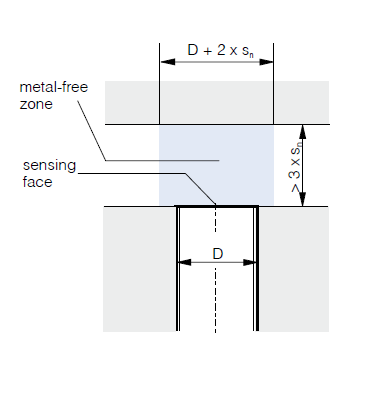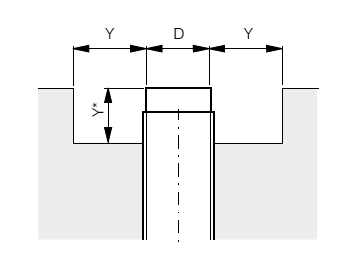Mounting
Mounting is a term commonly used in photoelectric and inductive sensors. The objective of sensor mounting is to obtain the most significant frequency response from the mounted sensor while limiting machine intrusion. The other objective of it is to work within application-specific constraints, such as guards or process requirements.
Mounting in photoelectric sensors is also referred to as installation. For more information about this term, go to Installation.
Mounting in inductive sensors:

Fig. 1: The value of X is estimated based on the value of D.

Fig. 2: The value of X is estimated based on the value of D.

Fig. 3: The value of Y is estimated based on the value of housing size (D).
Mega Learning
Let's discover the story behind each equipment!
